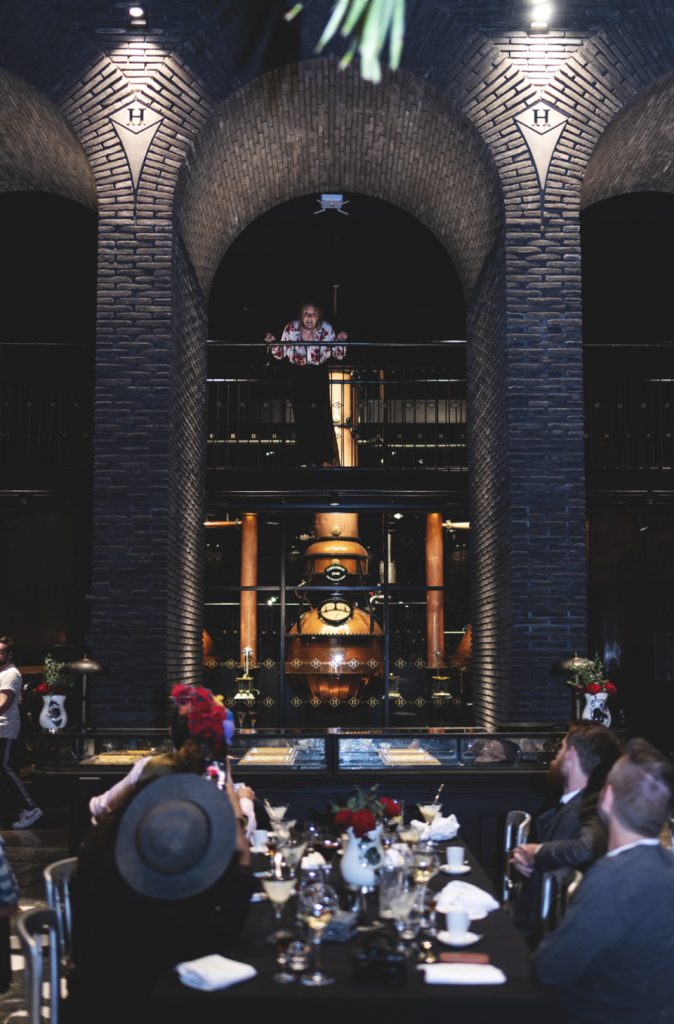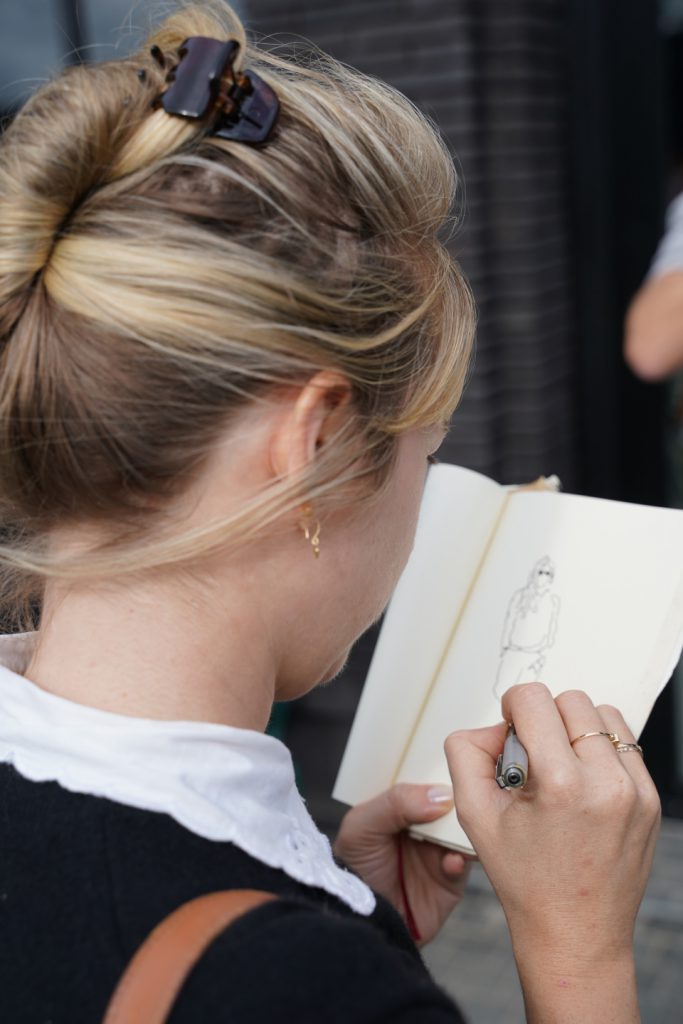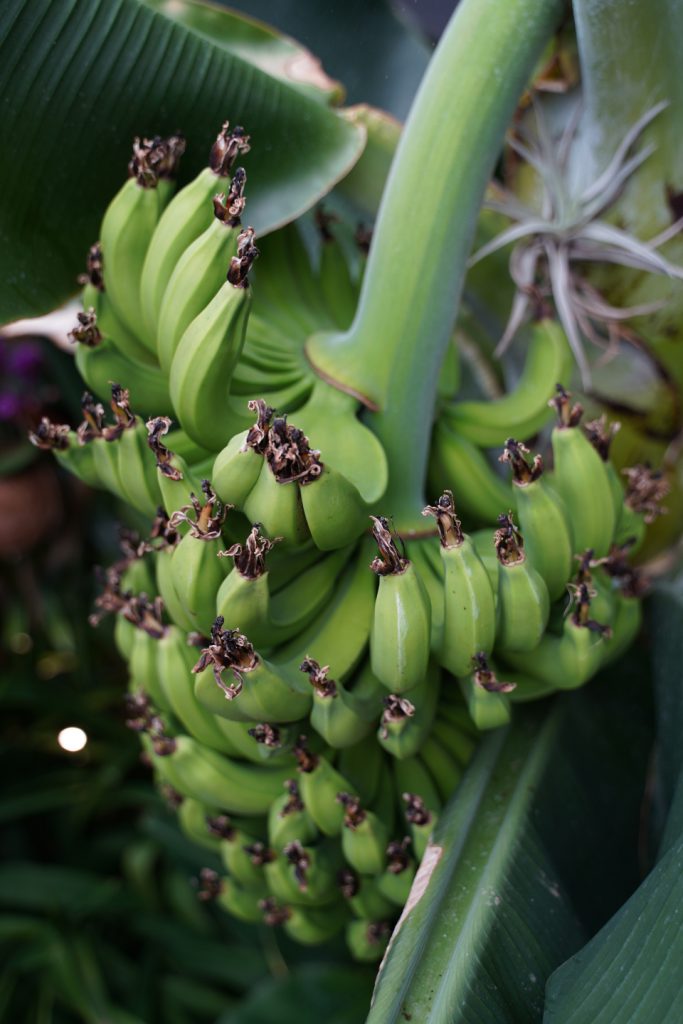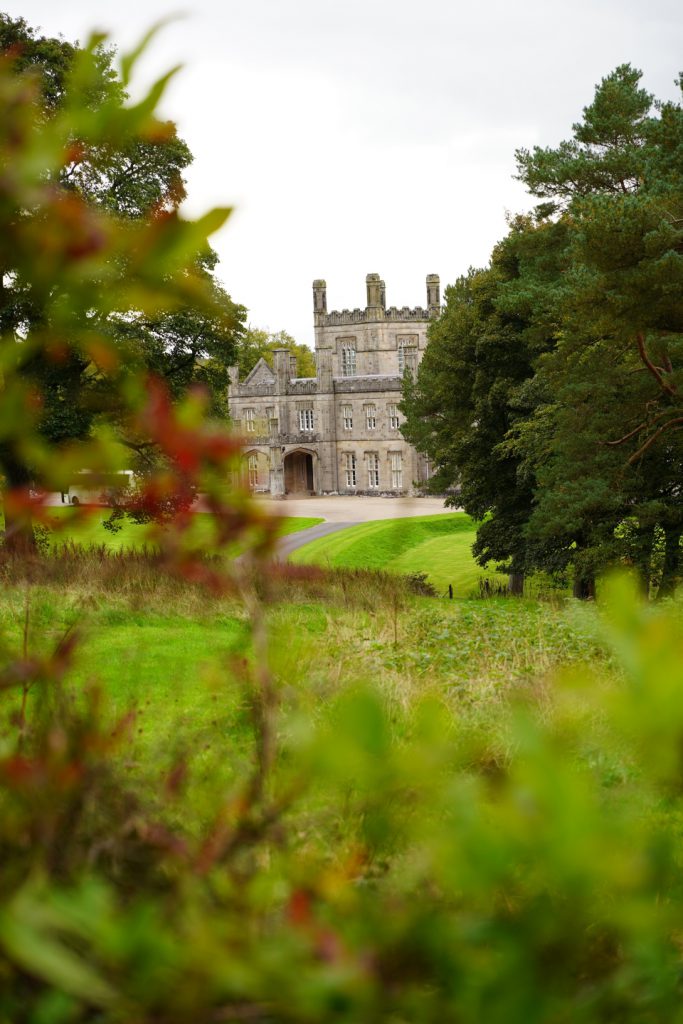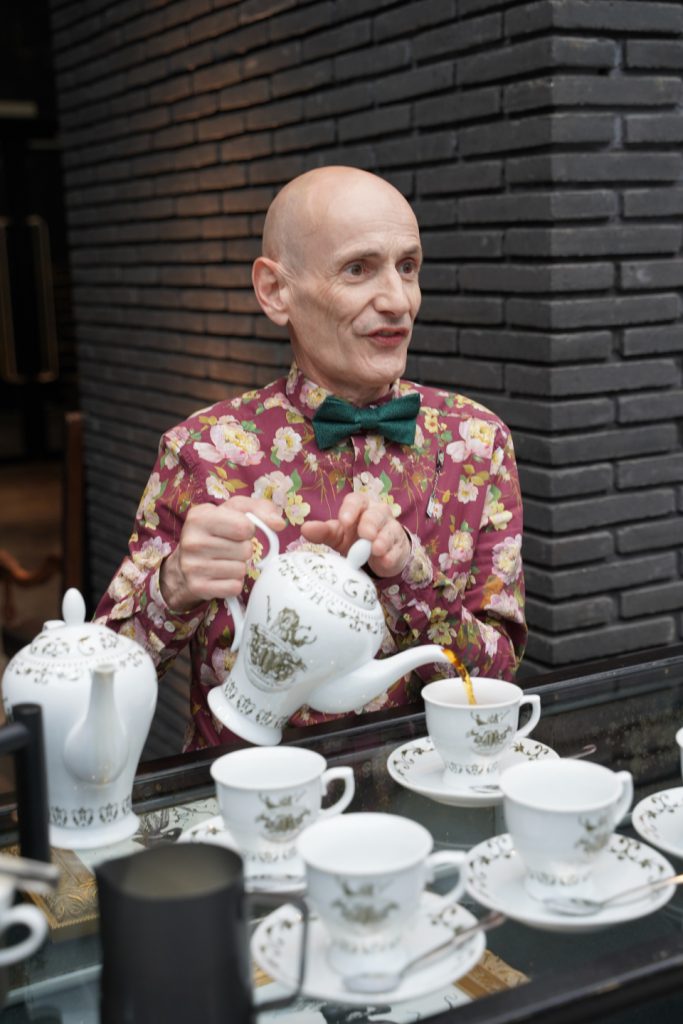Alongside 20 other people from the global creative industry, I was invited to give a keynote presentation about creativity in all it’s forms, at the Hendrick’s Gin Symposium for Creativity, with the goal to inspire the other guests. In turn they inspired me a bunch as well!
The event hosted around twenty guests from all corners of the world. Each one is a creative individual from different fields: a jewelry designer from Paris, a museum curator from New York, a fashion photographer from London, a TV and radio presenter from South Africa, a cocktail photographer and blogger from Portland, a Hollywood Art Director, among others, making for a diverse mix. Different ethnic backgrounds, different genders (M/F and X), and different ages, but we all share one thing in common: being creative and curious individuals.
A recap of the events!
The day before departure, we receive an eBook with a short biography of all the guests. In it, I read that I am not the only Belgian guest: Bartel Van Riet is also traveling with us. Flanders’ most famous and sought-after green thumb – although it’s certainly not just his thumbs that make him so sought after – has collaborated with Hendrick’s Gin several times in recent years. He cultivated a special variety of cucumbers for the gin brand, among other projects. Due to a significant delay at the airport, I get to know my travel companion well right away. We are stuck at the airport for a whole day, unfortunately missing the first day of the symposium.
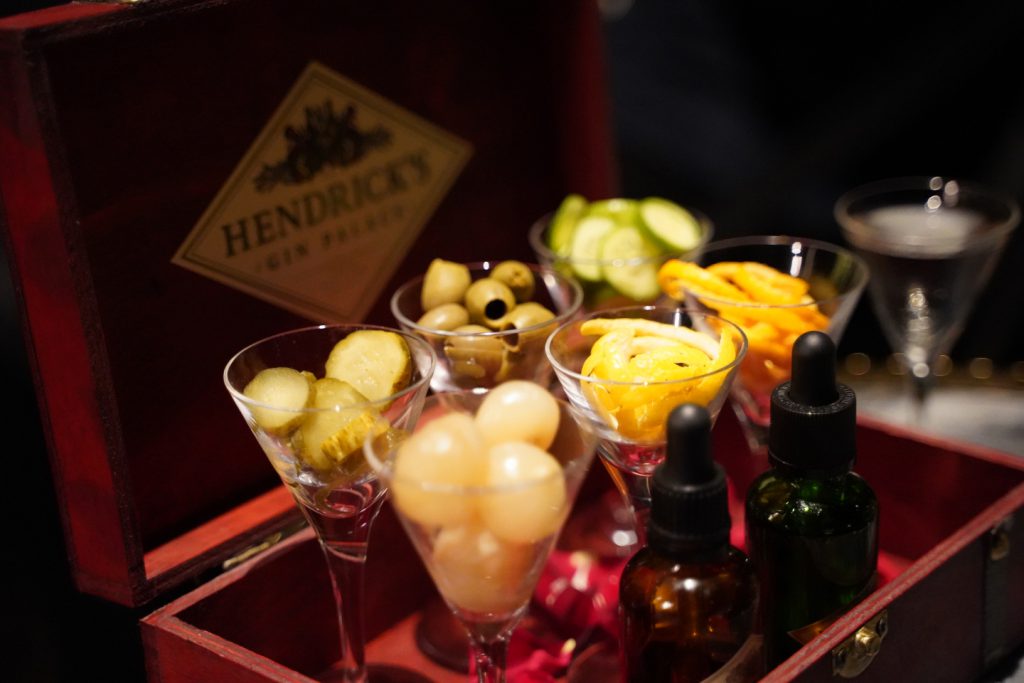
Around half past one in the morning, we finally arrive at our destination: Blairquhan Castle. Despite the late hour, the castle owner is waiting for us. Blairquhan Castle will be our base for the next few days. We pass the long day with a Hendrick’s Gin & Tonic in one of the many living spaces of the impressive castle.
After a short night, we meet the two cucumbologists who will guide us through the symposium at breakfast: Doctor Montgomery Monty Medwin and Doctor Felicity ‘Fisty’ Chambers. Both are graduates with a doctorate in cucumberology. In reality, they are actors, but the two impeccably dressed characters are as hilarious as they are invented. Medwin turns out to be a wonderful wordsmith who seizes every opportunity to recite a self-written poem. Fisty is a ravishing redhead who fills every room with her charisma. After Bartel and I also get to know the rest of the guests, it’s time to leave the castle for a palace; the Hendrick’s Gin Palace to be precise.
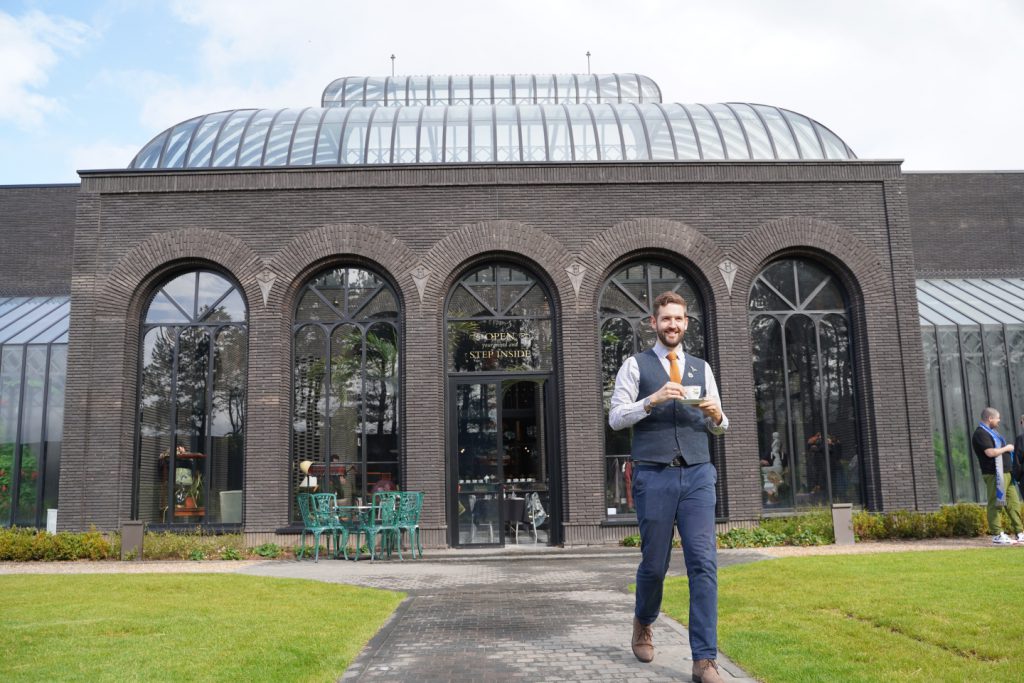
The Hendrick’s Gin Palace is where the gin is made, but it’s much more than that. The distillery is located in the town of Girvan, but at Hendrick’s itself, they always refer to it as Girvana, a fusion of Girvan and the Buddhist Nirvana. It is undoubtedly the most beautiful production site I have ever visited. Upon entering, you immediately see the stills where the gin is distilled. These stills are the heart of the site, but they are surrounded by a laboratory, cocktail bar, and two greenhouses, each with its own climate, among other things. Everything is meticulously finished, each room more beautiful than the last, all subtly imbued with a Hendrick’s touch. We knock on the stately gate of the wall that surrounds master distiller Lesley Gracie’s playground. It’s Lesley “Miss Hendrick’s Herself” Gracie who pokes her gray head through a small door in the gate. It’s a hilarious sight, such a small lady having to climb a ladder to see who’s knocking at her gate. But she visibly enjoys welcoming her guests in this way.
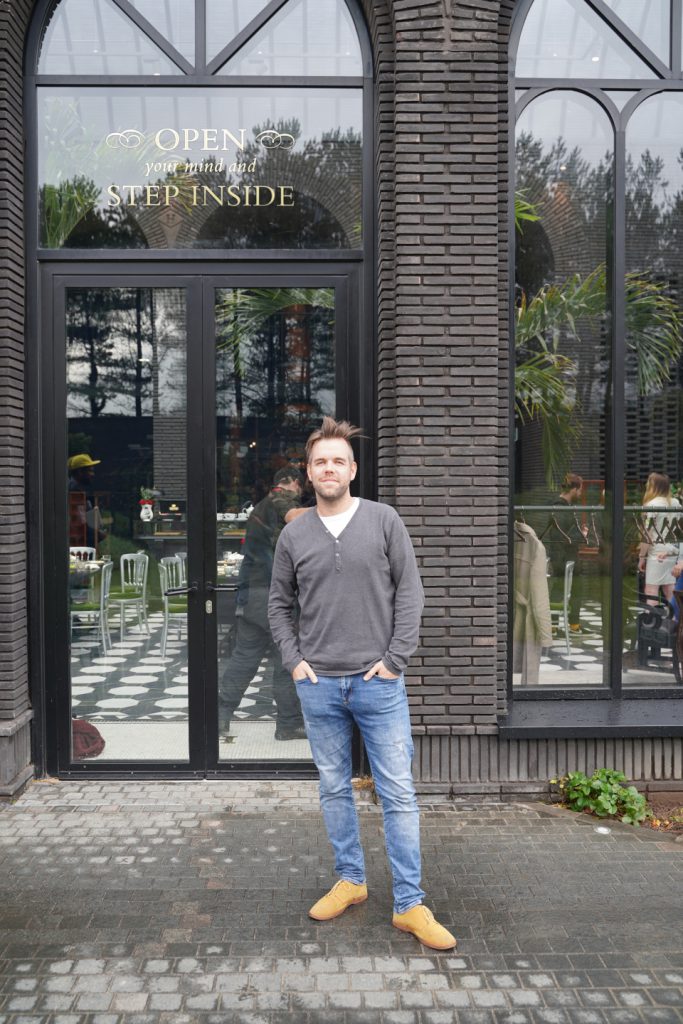
After some welcome drinks in the foyer, we are led to the tasting room. The space is set up like a classroom that resembles a cross between a boarding school for wealthy children and a class from the Hogwarts School of Witchcraft and Wizardry. With her long gray hair, Lesley Gracie herself wouldn’t look out of place in the Harry Potter movies. Under her guidance, we undergo a deconstructed tasting that clarifies the production process of Hendrick’s Gin. The gin is composed through blending. In the production area, there are two types of stills; one produces a gin where the botanicals are mixed with the gin (in liquid form), and the other produces a distillate where the botanicals flavor the gin by allowing alcohol vapors to flow through the herbs. We taste both distillates separately and undiluted, but also blended. After blending both distillates, they are finished with essences of rose petals and cucumber. We also get to taste these oils separately. However, they are so concentrated that we have to spit them out if we don’t want to end up with a stomach ache. Finally, the gin is diluted to the Hendrick’s Gin as we all know it. By now, we are quite familiar with gin, but when Hendrick’s Gin entered the market, it was definitely swimming against the tide. Even to this day, this method of gin production is quite unusual. The strength of the brand lies in the fact that they carry this unusual character through everything (including their marketing), among other things.
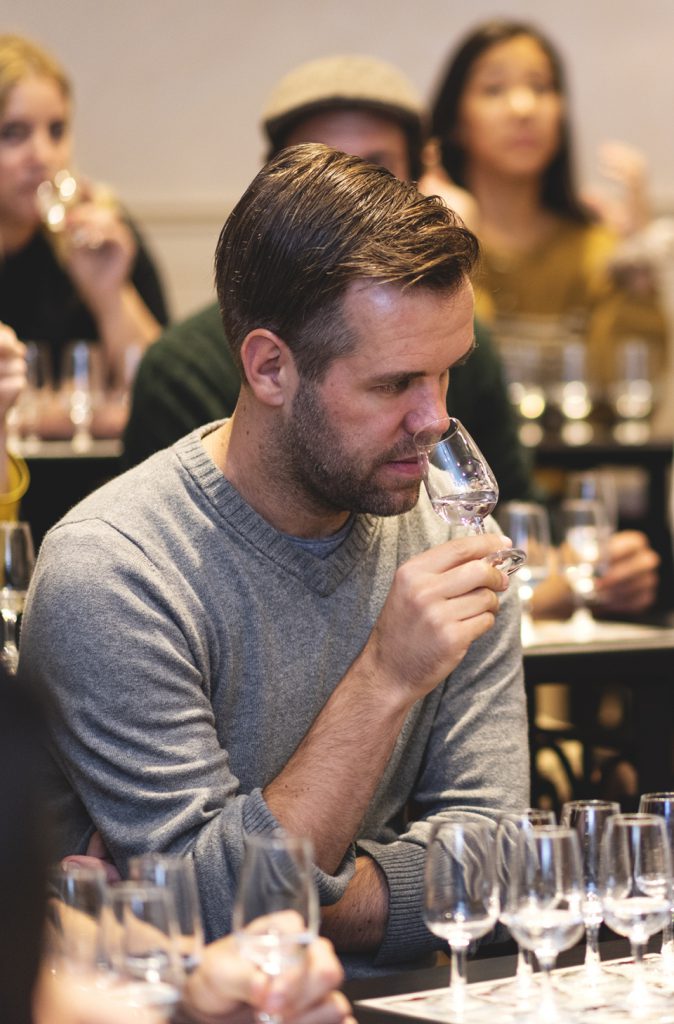
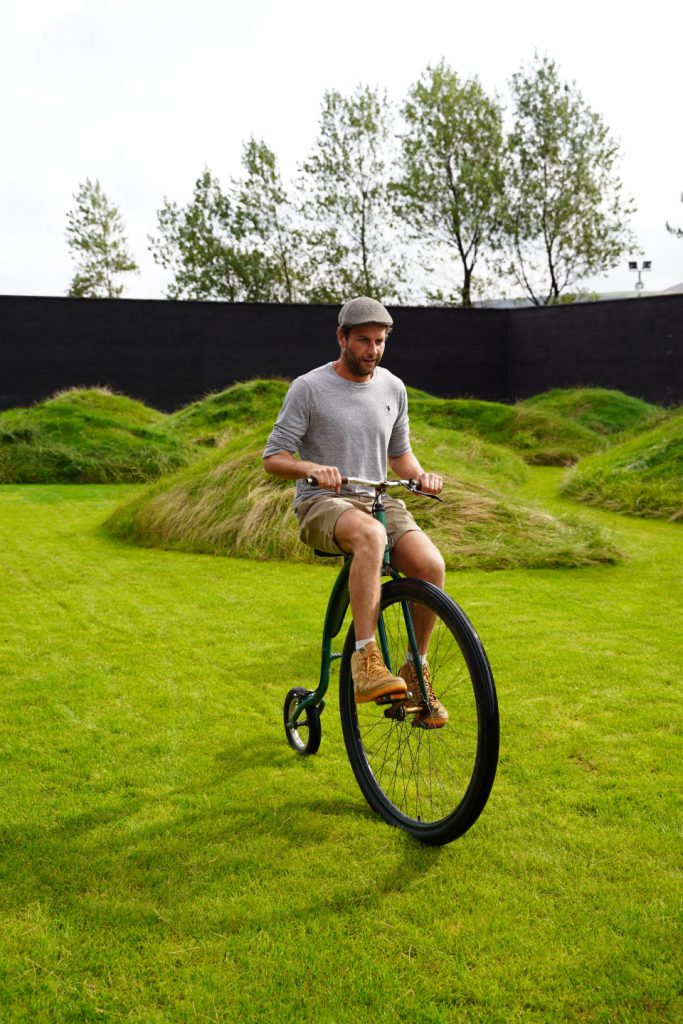
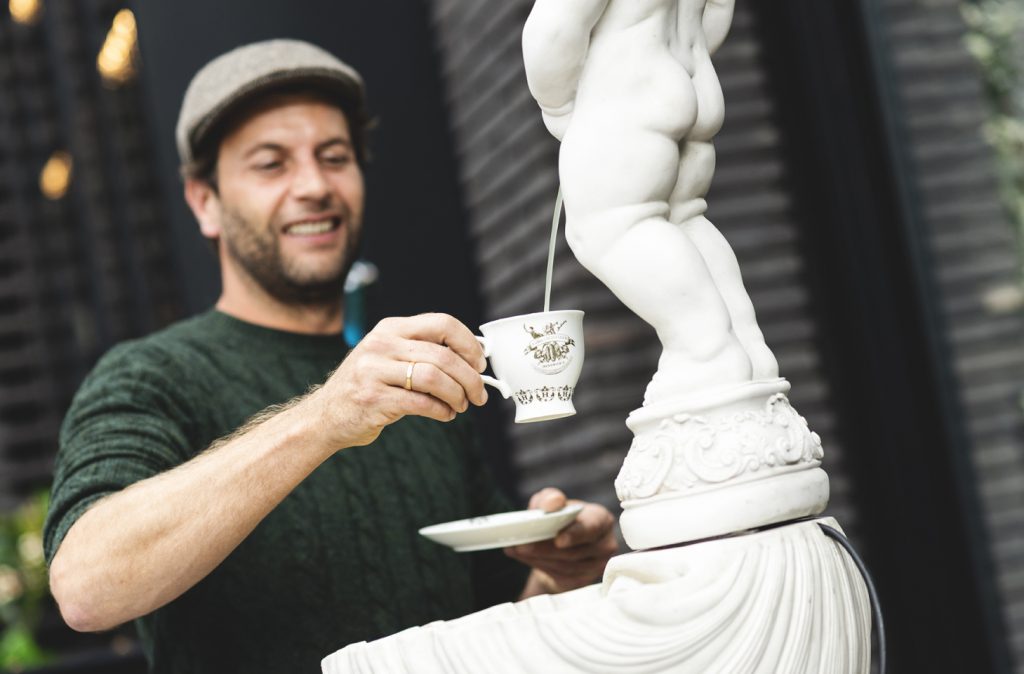
In the afternoon, Lesley takes us to her laboratory. The lab is so beautiful that you would think it’s just for show, but it is indeed the epicenter of Hendrick’s renowned R&D. Only the classic Hendrick’s Gin is known to the general public, but Lesley is constantly innovating and experimenting. We get to taste the cordials, liqueurs, and distillates she has conjured up. Some are released in limited editions, such as the Hendrick’s Orbium Gin and the Hendrick’s Mid Summer Solstice Gin. Others are never sold but only distributed among a handful of bars, such as the Battersea Cordial and the Hendrick’s Quinetum Cordial. The most exclusive thing we taste is the Hendrick’s Kanaracuni. This spirit is made based on scorpion tail. For the vegetarians among us, don’t worry, ‘scorpion tail’ in this case is not the tail of a scorpion but a plant in the same form. The plant only grows in the Venezuelan jungle and was distilled on-site by Lesley in portable mini stills. In total, she distilled – amidst drug and guerrilla gangs – 8.6 liters, which she smuggled into Scotland in her suitcase using empty water bottles. With such a story, you can certainly make an impression. The next day, we return to the lab to get hands-on with tinctures and distillates ourselves.
Almost all experimental brews are made with plants and herbs from the greenhouses of the Gin Palace or the herb garden on the estate. One greenhouse has a tropical climate and grows bananas, among other things. The tastiest bananas from Girvan, Lesley assures us, and incidentally the only ones. In the second greenhouse, the climate is warm but dry. Here, among other things, agave plants grow.
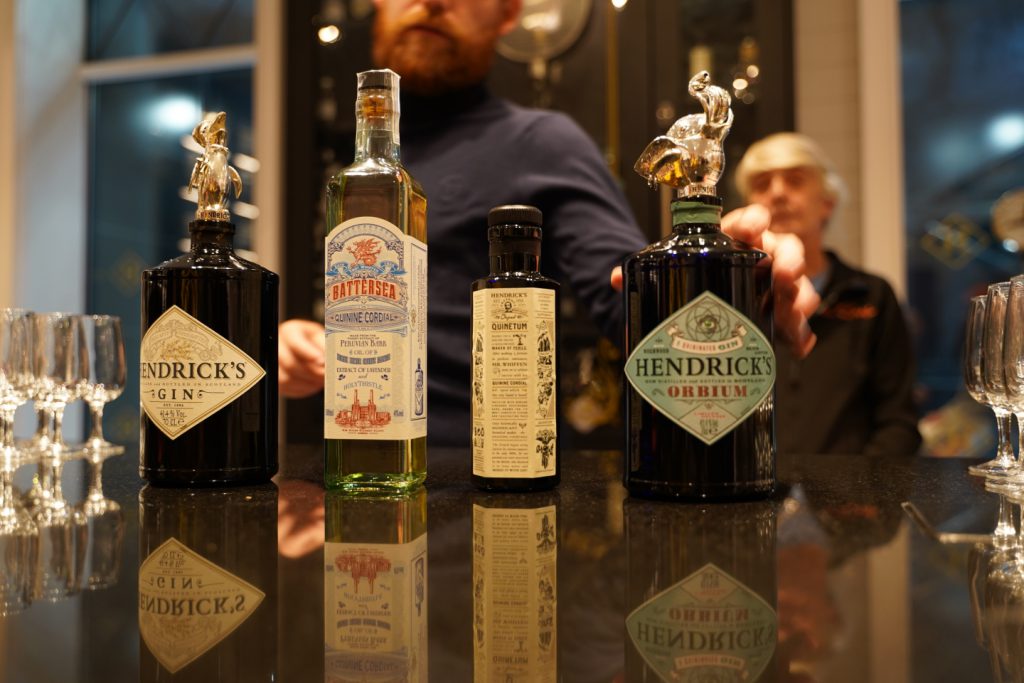
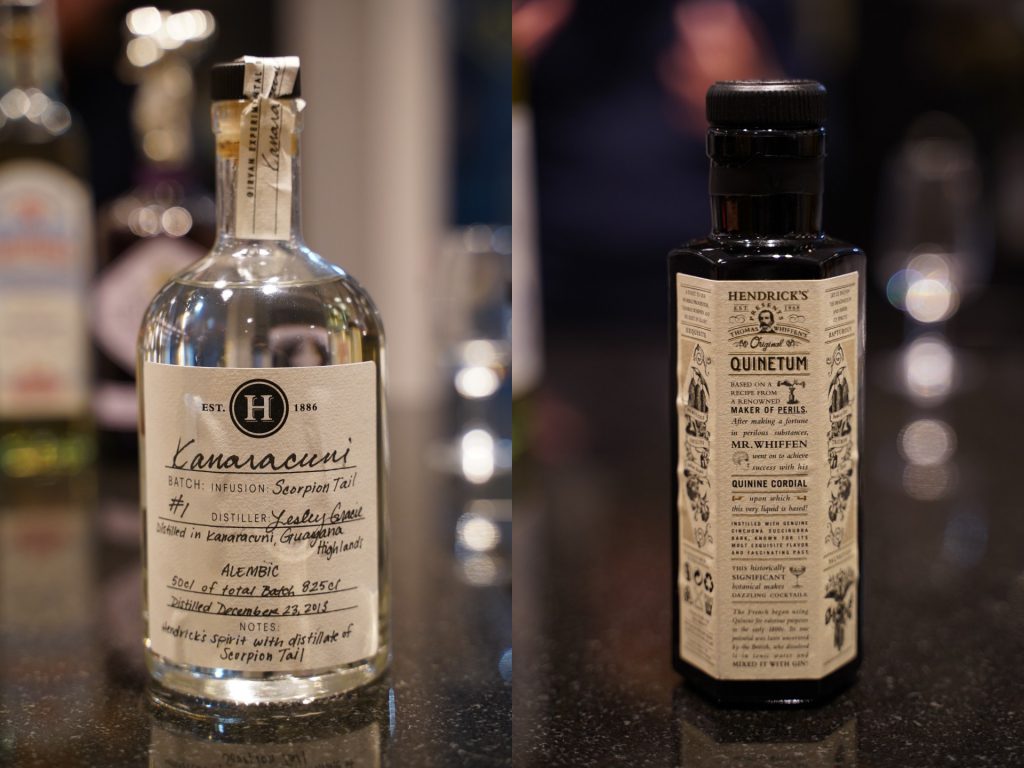
It’s fantastic to see how much trust and freedom Lesley gets to let her creativity run wild. The entire brand is built on creativity, curiosity, and innovation, which is also why we were invited. Bringing together creative people is inspiring for everyone. In between the gin-related activities, we listen to sessions organized by participants from all corners of the world. We listen to Kimberly Drew, an American activist who fights to give black artists more opportunities in the contemporary art scene. What started as a small project has led to collaborations with The White House (oh, the irony), Vogue, Prada, and Instagram. We watch a presentation by Annie Atkins, an Irish graphic artist who develops movie props for Hollywood films. She gives us a fascinating behind-the-scenes look and tells us what inspires her.
We also gain insight into the life of Christopher Bevans, a man who started as a simple tailor and now collaborates with people like P. Diddy, J.J. Abrams, and Pharrell Williams. He designs clothing with modern technology: from embedded chips to scannable codes that lead you to a shop where you can buy the garment. Meet a friend at a party wearing a nice sweater? Scan the code, and with a few clicks, you can have similar garments delivered to your home.
Not everyone in the group collaborates with well-known names, but that’s not the point either. I personally found more inspiration from the presentation by Nikesh Shukla, who used a racially charged encounter on a train as a guide for a fictional book, thus starting his career as a bestselling author. For everything he writes, he draws inspiration from what’s happening around him in daily life. Mehdi Lacoste’s life story aligns well with Hendrick’s philosophy. He made a career as a fashion photographer by going against the grain and working entirely analog in a digital world. The young Frenchman now commutes between London, New York, and Paris to photograph for the world’s biggest fashion houses.
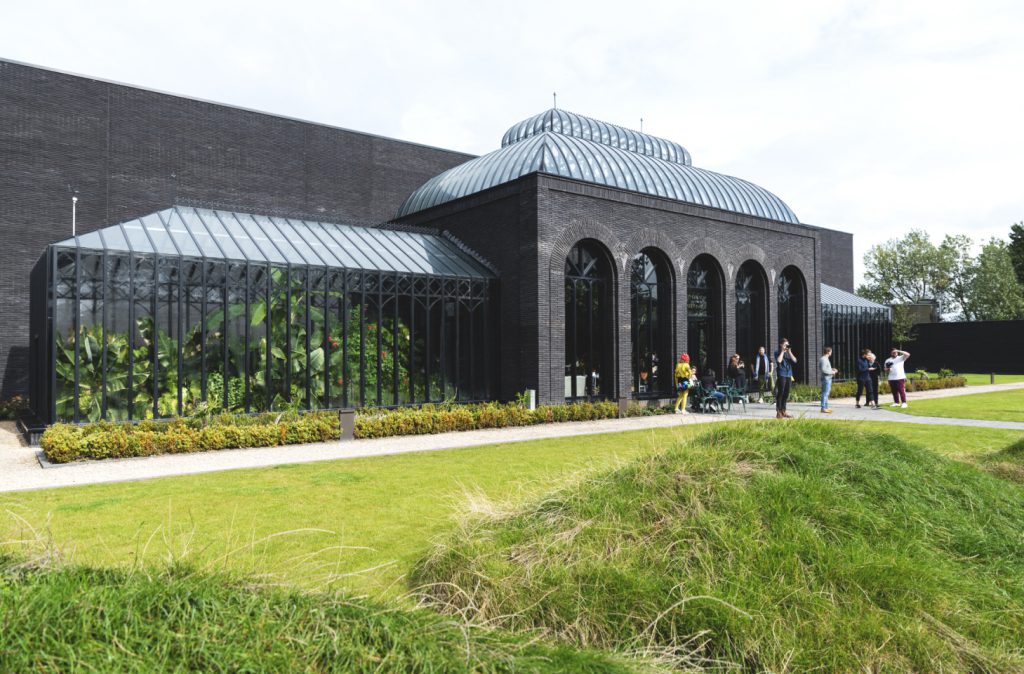
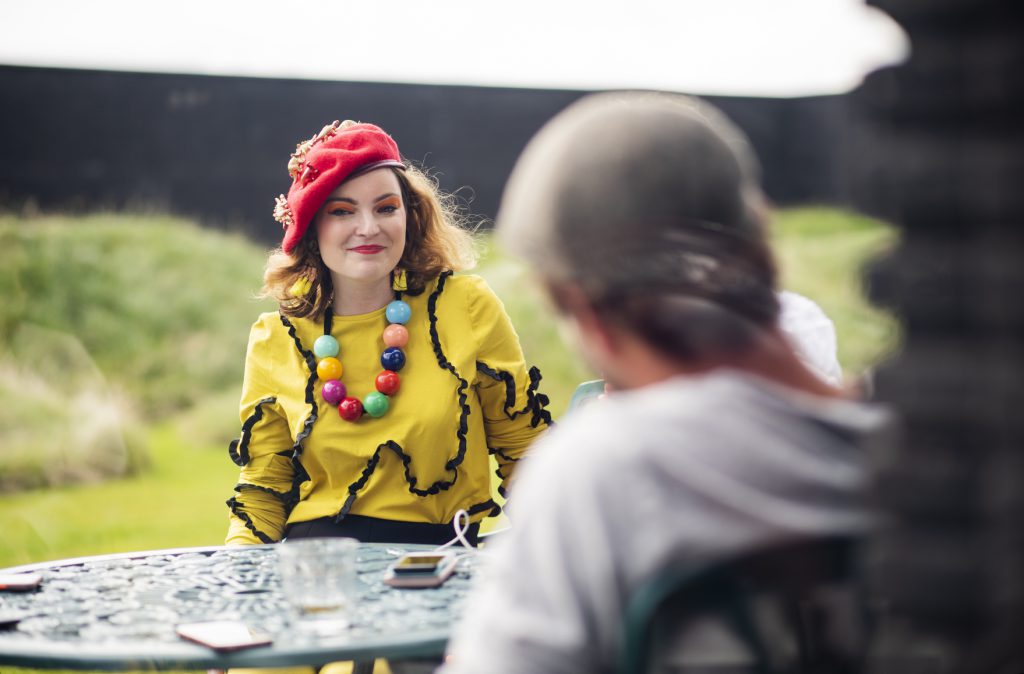
And Sophie-Anne Cochevelou’s story also intrigues me. She turned her biggest weakness into her greatest strength. As a teenager, she struggled with social anxiety; she started wearing all sorts of strange clothes and jewelry so that people would avoid her. If they did approach her, it was always about her remarkable attire, something she could talk about and served as an excellent shield against other conversations. She now works in London as a successful clothing and jewelry designer, still in the same remarkable style. Not really my style of clothing, but another example of inspiration coming from an unexpected place. What does all this have to do with gin? At first glance, not much. But Sophie-Anne finding success by leaving the beaten path and fashion photographer Mehdi swimming against the tide, doesn’t that make you think of a certain gin brand?
In the evening, we head to the bar of the Gin Palace, a roaring twenties-style bar that doesn’t fall short in terms of interior design compared to the better speakeasy bars. Here, we are treated to the Tini Martini Enlightenment, a small theatrical performance interspersed with tastings of small portions of Dry Martini. Our two cucumbologists are in their element. This kind of theater is not usually my cup of tea, but Fisty and Medwin do it so well that we all love it. Medwin works his magic with words, and Fisty’s movements betray a solid theater background. We taste various Tini Martinis, from bone dry to so dirty you wouldn’t tell your spouse about it, and from classic to temporary. There’s something for everyone, and in the end, we get to try our hand at stirring a few Martinis ourselves.
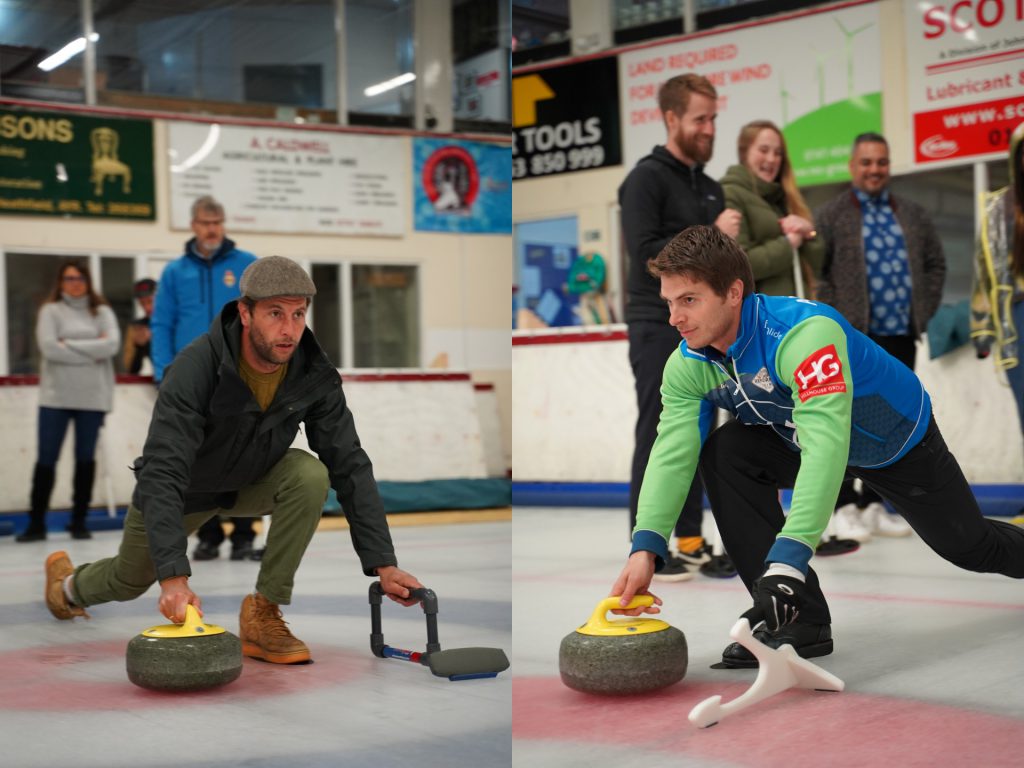
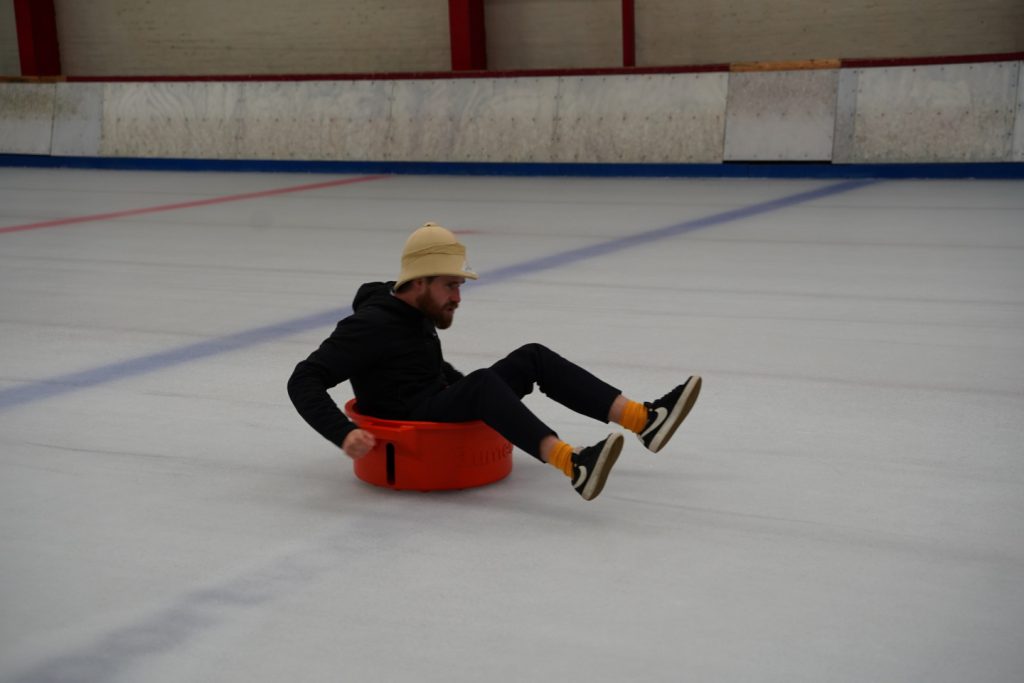
Hendrick’s wouldn’t be Hendrick’s without a few special surprises on the agenda. We even go curling. Yes, curling, that crazy sport where you have to aim round stones at a target using brooms. We even get a lesson from an Olympic medalist in the sport. You might think it can’t get much crazier than that. Until we also try Penny-Farthing. That’s riding those old contraptions with a much too large wheel in the front and a much too small one in the back. The name comes from 2 coins, the penny and the farthing. One is large, the other is small. Team Belgium, Bartel and I, turns out to have the most talent. In between, we also immerse ourselves in a Gong Bath. I can definitely recommend it to anyone who needs to de-stress.
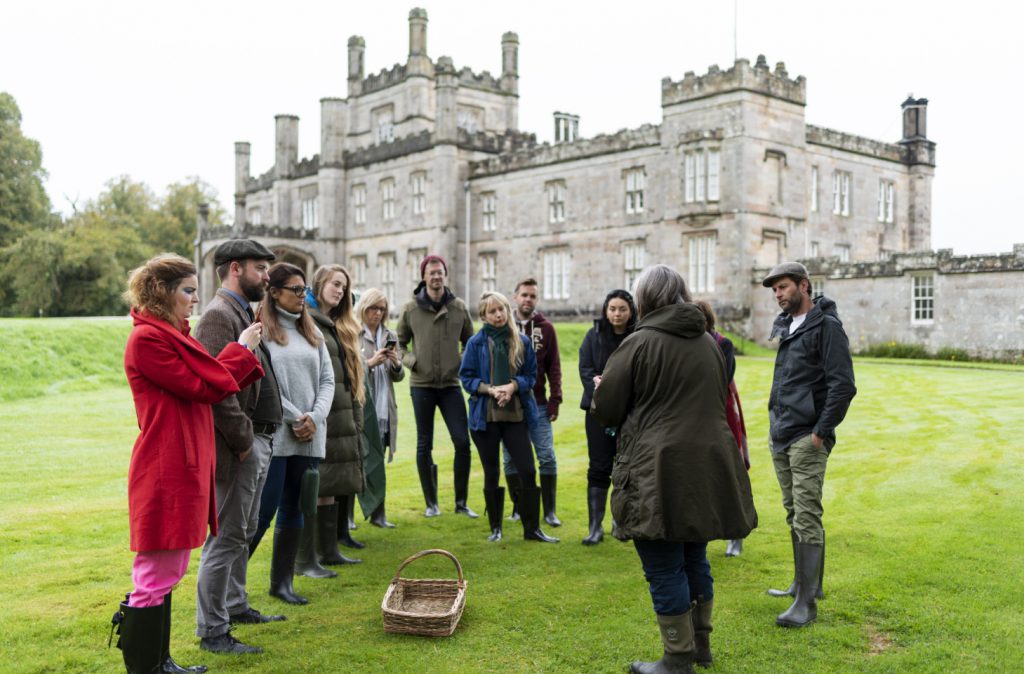
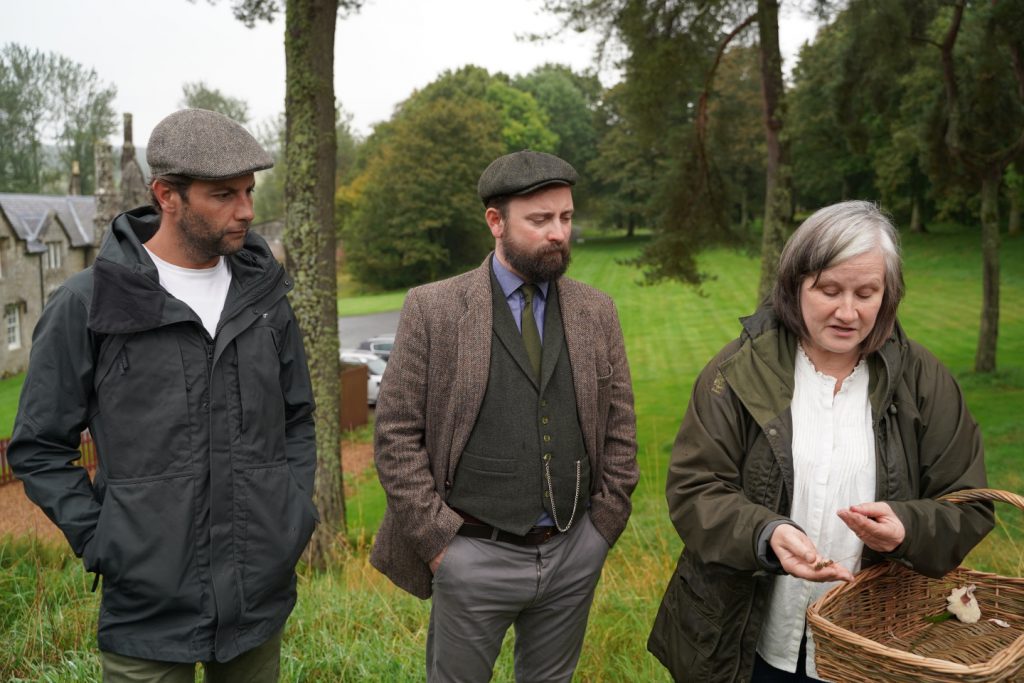
Throughout the trip, we shuttle back and forth between the castle (where we sleep) and the Gin Palace (where most activities take place). But one of the highlights of the trip for me takes place on the castle’s estate. We go foraging with Monica Wilde! Bartel is also eager because Monica Wilde is one of the best foragers in Great Britain. I’ve been foraging before, but Monica’s knowledge blows me away. We are literally just five steps out of the castle, and Monica has already found more than 10 edible plants and medicinal herbs. When we come across a plant that relieves the itch from a nettle sting, Bartel puts it to the test. He repeatedly runs his hand through a bunch of nettles until his skin is visibly irritated. The itch immediately subsides after Monica rubs the herb on it. Monica passes his test. After a foraging trip in drizzly Scottish weather, we return with chanterelles for lunch, plants for a soup, and herbs for tea. Creativity nature style!

